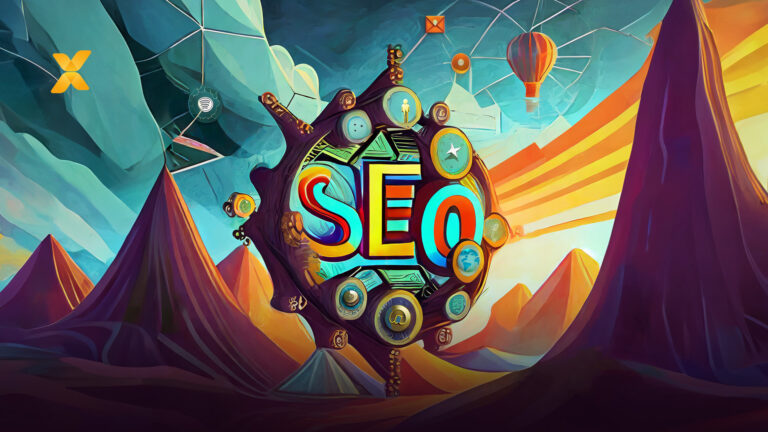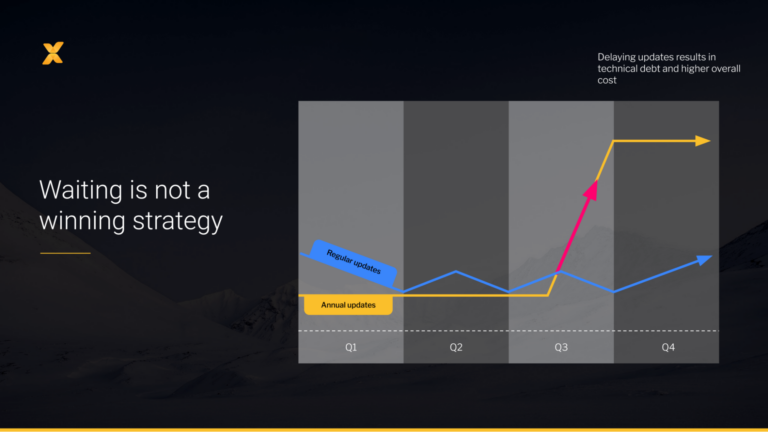When starting out on a program to optimise conversion rates (CRO) or—more broadly—the customer experience (CXO), you will inevitability run into some challenges around the technology stack you’ll be using.
Let’s talk about that.
Define your goals and how you want to reach them
One helpful paradigm that many technology organisations (try to) adhere to is the notion of spending 80% of your budget on people and 20% on technology. Some organisations take that even further to a 90/10 ratio, but that will be very hard to do with CXO. Since many CXO technologies have a high ROI attached to them, they can ask quite some money for them. In my experience, most companies spend too much on technology anyway (or rather: too little on people) so 80/20 is probably a good goal to have.
More important though is creating some well-defined tactics that you need to realise your CXO strategy and define how technology will support you to execute on these tactics.
It’s very easy to get sucked in by amazing sales pitches—like with many personalisation and AI tools—but without a plan and a well-defined need on how you’re going to use it, you’re probably going to end up with a tool that you can’t get any ROI on. Or worse—no-one is even going to use it.
Getting the Budget
In most companies you’ll need to come up with a clear business plan, laid out in a way that that management—that is a couple of levels removed from the day-to-day use—can still understand how your new technology spend will add value to the overall business goals and strategy.
You need to cover what the technology does, who will use it, how they will use it and how frequently. Translate this into money gained by improved website efficiency, but also don’t forget improved efficiency of staff (for example: when you fix usability issues in a customer service system that saves them X hours a week). Decision makers often simply make decisions based on estimated risk and budget.
The second tip is that you should try to connect to other teams or departments to make the budget happen. There’s often a lot of crossover between CXO and design, UX, (inbound) marketing, the product team and sometimes even with the IT team itself. Anyone that has customer touchpoints needs a better understanding of the customer, which is something your tools can provide. You probably already see this with many different departments using the data coming from your website analytics tool.
So when executives make decisions about who gets budget, departments that are asking for the same technologies are much more likely to get budget for those, so team up with your fellow optimisers from other departments!
Like I mentioned before; these tools can be expensive (because they are worth it), but to get started, it helps if you can share the burden across different departments.
Where to start spending
With optimisation programs in general, you shouldn’t rush into fixing things. Start with figuring out what the real problems for your users actually are. Invest in resources that will help you understand who your customer is, what they want to achieve and how they (try to) do that through your product or service. Using your budget to get those insights is money well spent and something you often only need a minimal amount of tech for to accomplish.
So take a step back, remember the 80/20 rule and consider if you really need to spend all of your budget on new tech, or if you should spend it on your people and training them to make the most out of the tools you already have.
So if after consideration you still feel that there’s a gap in your optimisation tech portfolio, how do you decide on what tools to use and if they are worth it?
Most tech doesn’t really live up to the hype or their sales pitch, so be critical about the promises and make sure to demo the tool (with your team!) before buying it. Would you still be ok with purchasing the tool if it would only bring you 25% of what they offer in terms of ROI? Is there another tool that can give you 80% of the benefits for a fraction of the cost? Feature-rich sounds nice, but it’s also expensive, especially if you don’t use it. And do you need a turn-key solution, or do you have developers in house that can help you setup and integrate a cheaper option?
Ask around what competitors at a similar level and with similar skill sets use. Not to blindly copy them, but being aware of the landscape is valuable. There’s going to be a lot that you won’t uncover, but spending a couple of days to research your new tech usually pays off. Being diligent in this area is part of your job!
Common mistakes
Organisations often make mistakes when purchasing technology and CXO teams are no exception. We’ve all experienced instances where no-one is using a really nice and expensive piece of tech that’s collecting dust.
Buying into the hype
First off, you need to make buying decisions based on your defined need, based on the strategy and tactics we spoke about earlier. Since these CXO tools are pricey, they often come with aggressive sales teams bombarding you with information and requests for a chat or demo. Unless something is truly groundbreaking and challenges how you do things, you probably don’t need to take that call.
Executives making tool decisions
The executives might have the final call on your budget, but that doesn’t mean they—especially if they are multiple levels removed from the actual work—should be the ones making the call on the actual tool. Those salespeople we just spoke about are trying to sell to executives more and more because they know they hold the budget vetoes and they’ll want to leave you out of the discussion. Not to blame the executives—it’s just not their job to work with the tools—but they should push for outcomes, not the actual tactics your team is using. Make sure you are in the room when these purchase decisions are being made and make sure you’re actually staffed for the technology, which brings me to the next point…
No time carved out for the tool
If a technology takes more than an hour of training in order for your teammates to become an intermediate user of that tool but you aren’t able to dedicate any additional resources afterwards, it’s probably not a good investment for your company. If people aren’t setup in their jobs to use the tool on a very regular basis, adoption will be a problem and you won’t get the ROI you need.
Buying tools multiple times
Just like the executives need to include you in purchase decisions, you should include them because they often have a much better overview of what is happening in the rest of the organisation. This comes back to my earlier point about connecting to other teams or departments to make your life easier.
I’ve seen it quite often, especially at multinationals, that the exact same tool is bought by many (sometimes dozens!) of different departments. Those vendors must be laughing their butts off. This is very costly to the organisation so make sure to bring those expenses down. This is true for UX tools, analytics, BI, A/B testing tools, tag management systems etc. etc.
How to measure success
Ironically, proving the monetary value of your CXO program over time can be quite tricky, mainly because there are a lot of external factors that you can’t control for (did revenue increase because of CXO, or because your main competitor went broke last year…?).
Make sure to keep a close record of the impact of your work. Not just for discussions around technology, but also for growing your program (and budget). After a year of using the tool you should be able to list a couple of things that really added some value that justify the investment multiple times over.
Although it might not help you internally, a good indicator of your team using the technology well is if the technology vendor wants to use you for a case study or sales pitch.
Technology that fits your maturity level, budget and pace
There are definitely parts of the optimisation cycle for which you don’t need any (extra) hardware or software than you already have. With just your laptop you can record screens, webcam, audio and hold remote user interviews to get qualitative data and there’s probably already some form of quantitative measurement tool available on your website.
But in order to do a full optimisation cycle (including a validation step), there are definitely some basics that you “need” to have in order to be able to execute and to measure correctly.
At the core of CXO is getting an understanding of the customer. So you need to look at the full (digital and offline!) customer journey(s) for your most important personas and identify where your biggest knowledge gaps are (both on a qualitative and quantitative level) and find tools that help you fill in those gaps.
Besides this, I think that (access to) a tagmanager is pretty much a must have. It’s easy to get started with if you have a new website (it gets harder the older the webshop is) and saves a lot of time managing all your online tech. It’s basically the plumbing needed to run your CXO technology.
Based on your maturity level, you can think about adding A/B testing, voice of the customer tools, targeting/personalisation, heat maps, screen recording, multichannel analytics, data visualisation, DMPs, eye-tracking, SUPR-Q surveys and automation tools. If you get to the higher levels, you might also get into server-side testing tools, but that is usually not something you’ll start out with.
All tools have their own up-and downsides, but this is really what an advanced program looks like.
Embedding growth
How fast you can grow really depends a lot on the organisation, how much they want to invest, how much time you get to grow the team and the skills and the tech you need to support that. You’ll often see that a CXO program has the largest impact (percentage wise) during the early phases because there still might be some easy fixes so you might be able to surprise some colleagues and hopefully get the organisation enthusiastic for the program. When the organisation and the CXO program get to a higher maturity level, it becomes more about embedding this way of working into the culture of the organisation, which will lead to the greatest success.
Vaimo’s Strategy and Consulting Teamacts as a trailblazer for your business, guiding you through new territories so that you reach and exceed your business goals. Combining the best in business insight and digital enablement we make sure that you are equipped to plan for and tackle your digital challenges head-on.Book a 15 minute intro call here.









